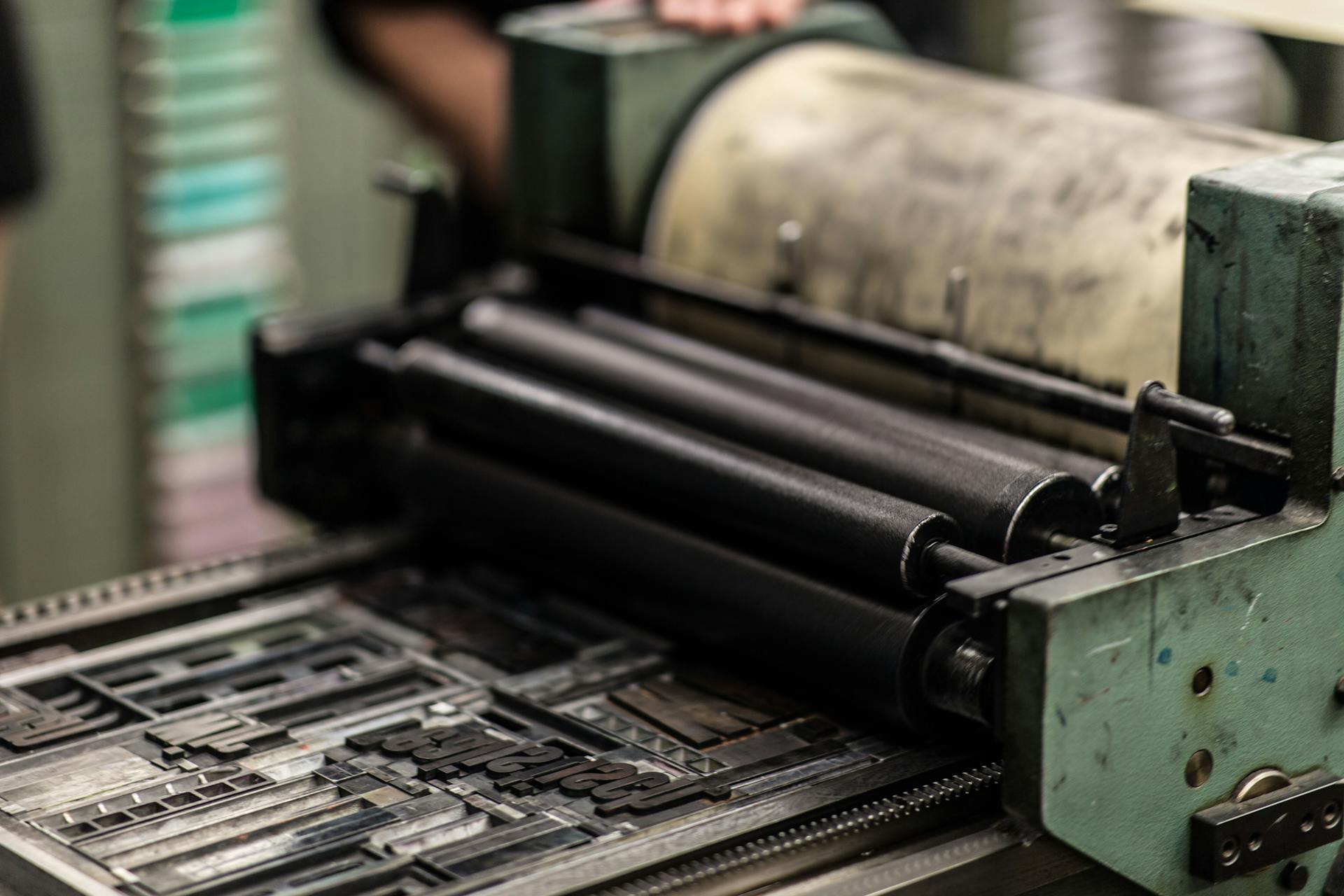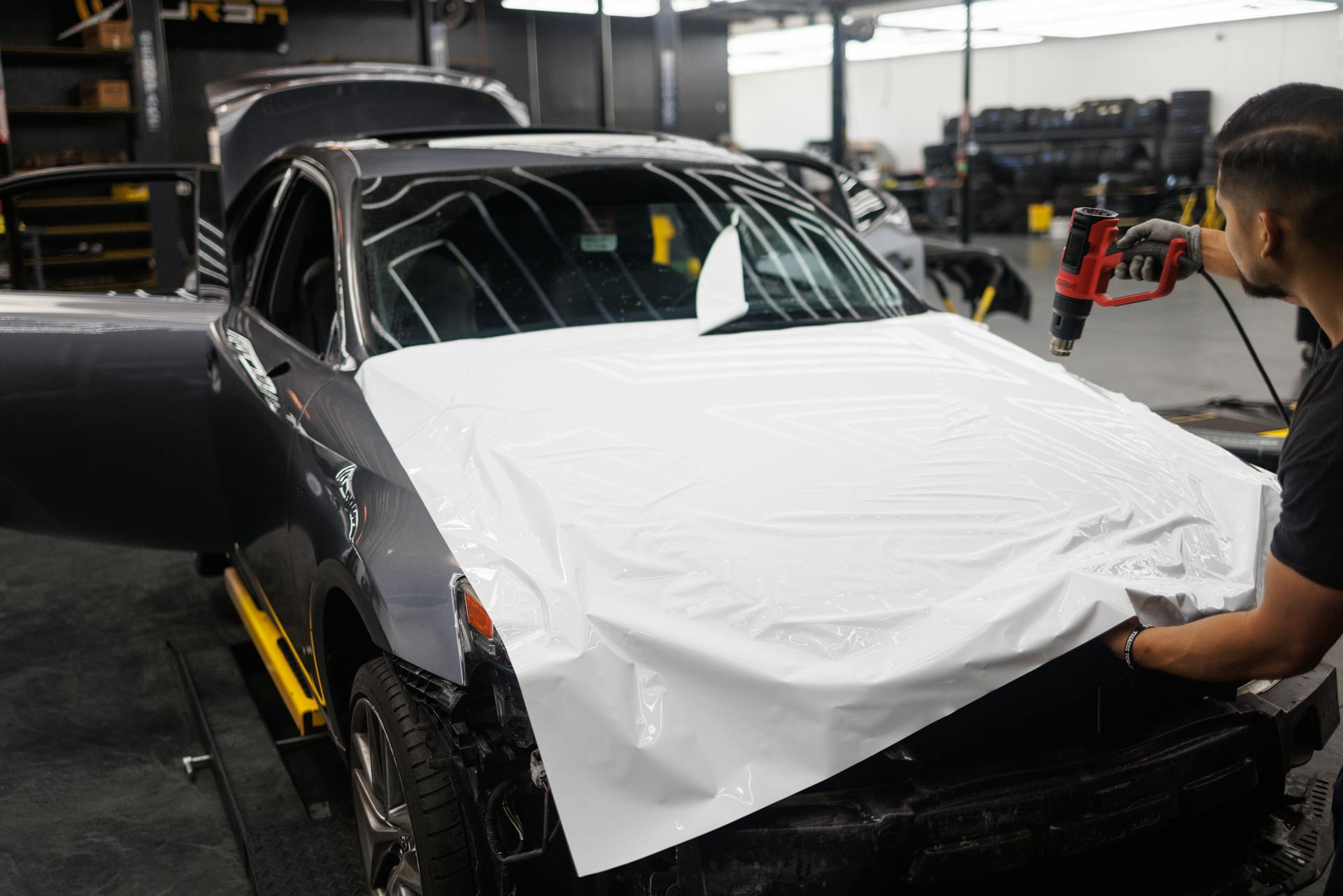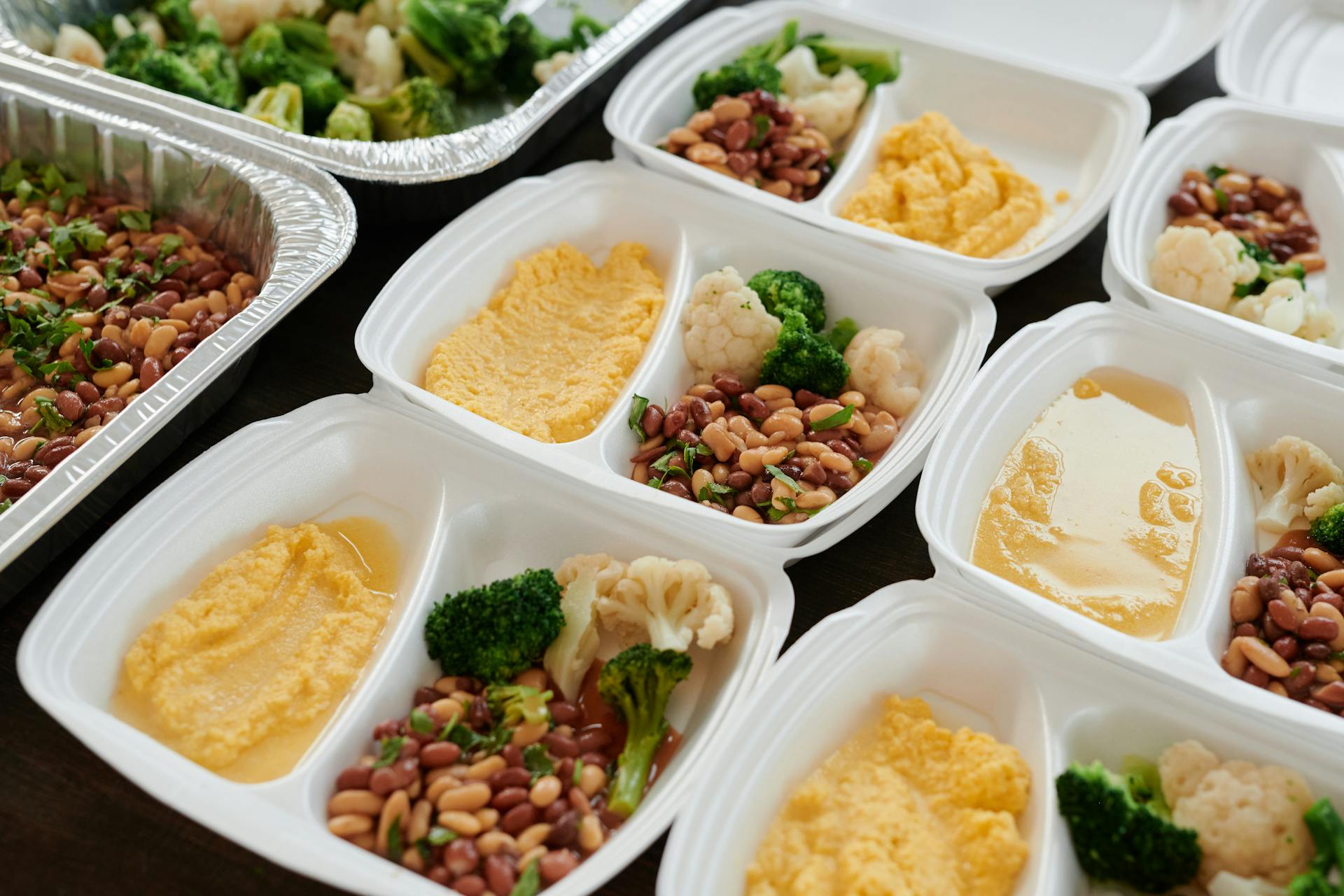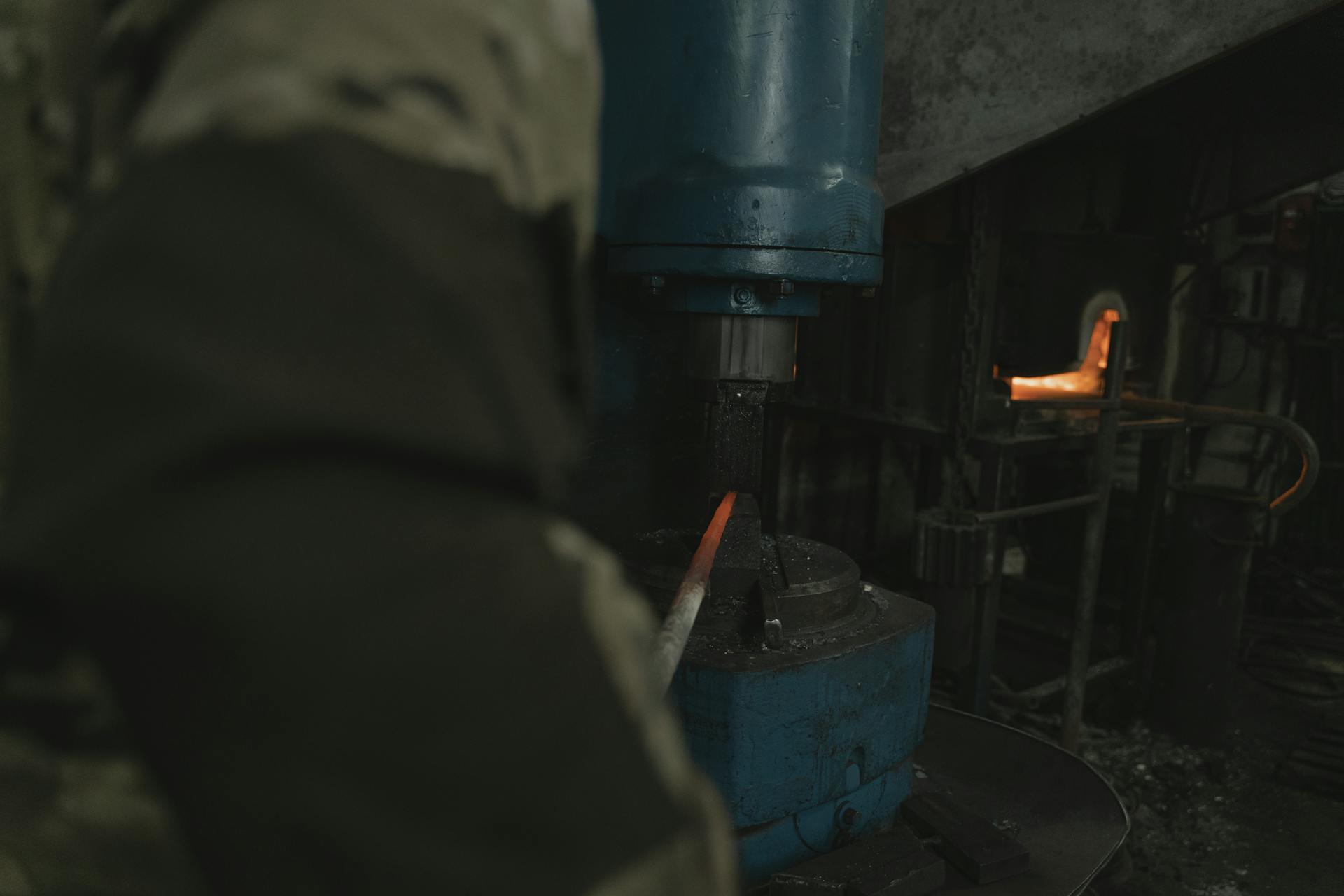
A vacuum heat sealing machine is a game-changer for businesses that need to package products quickly and efficiently. It can seal up to 50 packages per minute, making it a great option for high-volume production.
The machine uses a combination of heat and vacuum to create a tight seal, eliminating the need for additional packaging materials. This process is particularly useful for products that require a high level of sterility, such as pharmaceuticals and medical devices.
The vacuum heat sealing machine is also designed with safety in mind, featuring a secure lid that prevents accidental opening during the sealing process. This ensures that the machine operates safely and efficiently, even in high-production environments.
Intriguing read: Heat Shrink Wrapping
Key Features
The vacuum heat sealing machine is a powerful tool for packaging and sealing various products. It's available in different seal lengths, including 12″, 18″, 24″, 30″, 36″, and 48″, with the 36″ and 48″ options featuring a twin head.
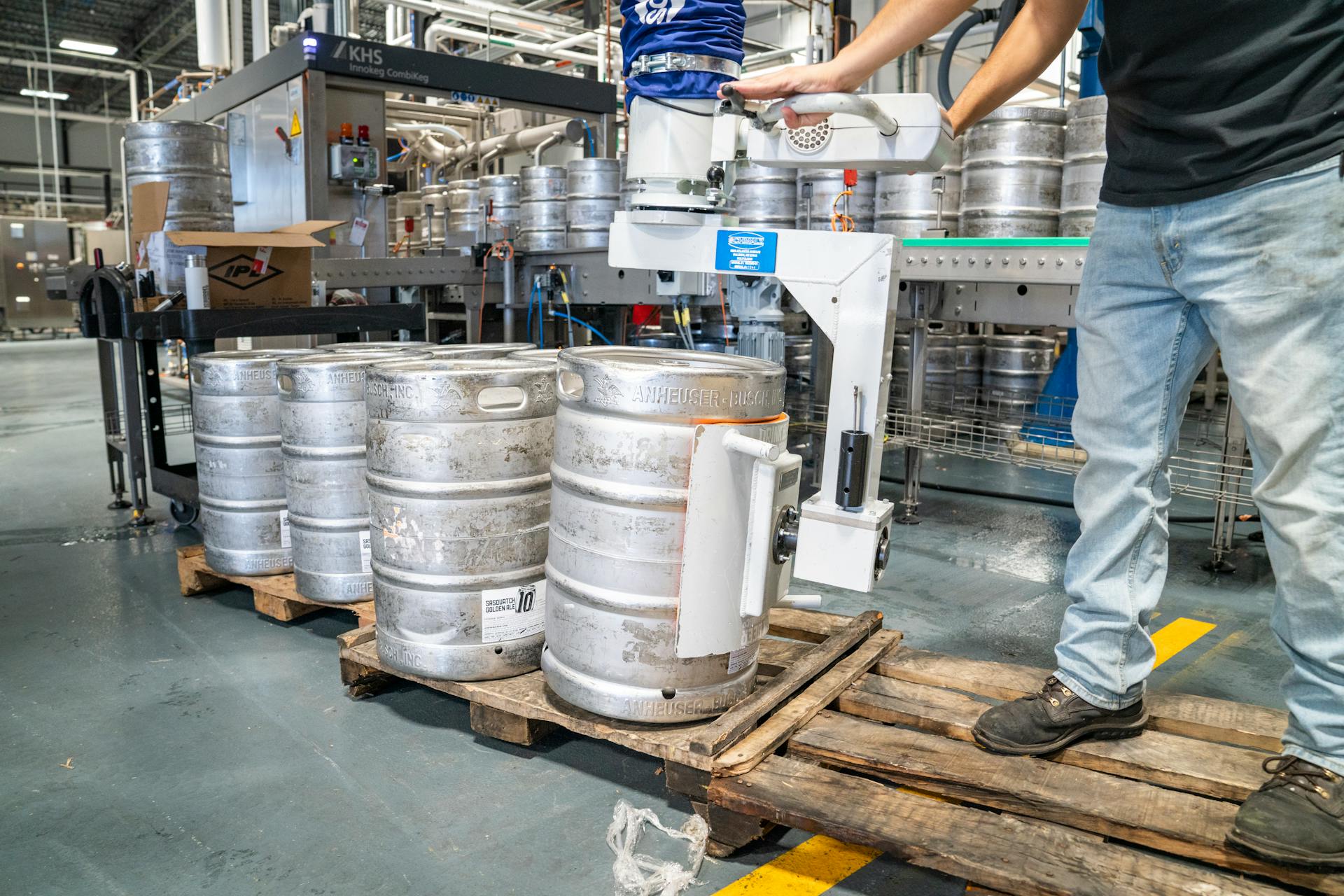
The machine is designed for efficiency, with a 1/4 HP electric vacuum pump and dual stainless steel nozzles that allow for vacuum packaging of two bags at a time. This feature is particularly useful for high-volume packaging operations.
Here are some key features of the vacuum heat sealing machine:
- Maximum seal temperature: 550 °F
- Gas flush capability for modified atmosphere packaging (MAP)
- Independent timers for vacuum, gas, and seal (up to 15s vacuum, 3.75s gas and seal)
- Pneumatic low-pressure jaw close safety system with release if obstruction is detected
- Air requirement (min): 100 psi
- Electrical requirement: 115V
When Quality and Time Matter
Quality and time are crucial in many packaging scenarios. IMPAK Corporation demonstrated this by rapidly assembling, packaging, and vacuum sealing exclusive product lines for events like Sephora's first cosmetic convention.
Their choice of 8” x 10” PAKVF 3.5 mil Metallized Pouches stood out, allowing the company's logo to pop and create an embossed look. This is a great alternative to price graphics and makes the package more eye-catching on store shelves.
Sealing the packages with the CHTC-280 Chamber Vacuum Sealer resulted in one of the tightest possible seals, perfect for keeping contents immobile during transport. This is essential for products that need to be handled carefully.
In urgent situations, IMPAK can supply customers with completed pieces consecutively for 5 days, as seen in the Sephora convention example. This rapid turnaround is impressive, especially considering their typical 5-day wait between receiving the product and packaging/sealing.
You might enjoy: Avery Labels Printer
Features
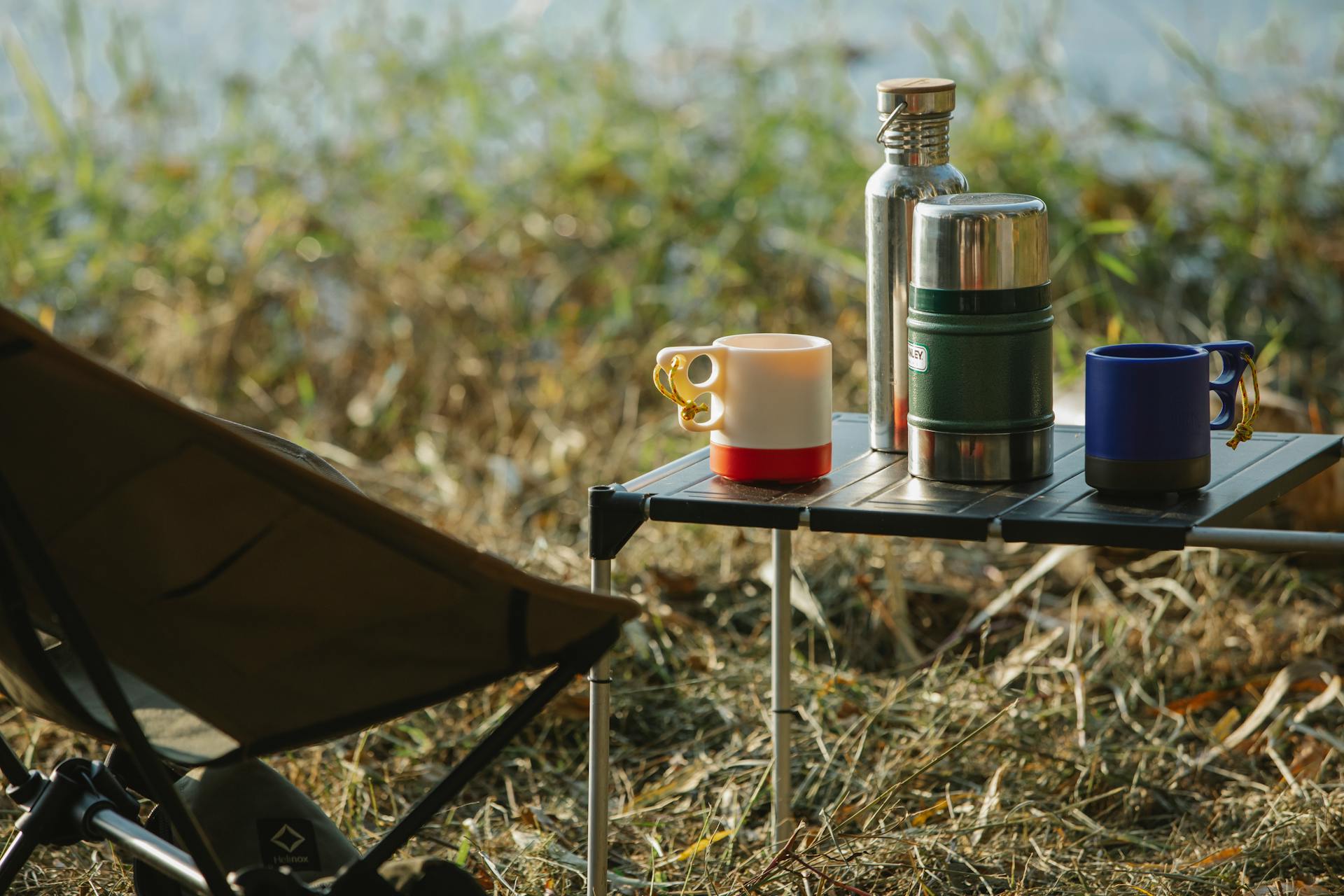
The vacuum sealer I've been telling you about has some amazing features that make it a must-have for any serious food preserver.
The seal length options range from 12″ to 48″, with the longer lengths available with a twin head. This means you can seal bags of all sizes, from small snacks to large quantities of food.
You can also adjust the head angle for horizontal or vertical use, giving you more flexibility in how you use the sealer.
The sealer has a maximum seal temperature of 550 °F, which is hot enough to get a tight seal on even the toughest bags.
Here are the available seal lengths:
- 12″
- 18″
- 24″
- 30″
- 36″
- 48″ (with twin head)
The sealer also comes with a 1/4 HP electric vacuum pump, which helps to remove air from the bag and create a tight seal.
The gas flush capability for modified atmosphere packaging (MAP) is also a great feature, allowing you to add a protective atmosphere to your sealed bags.
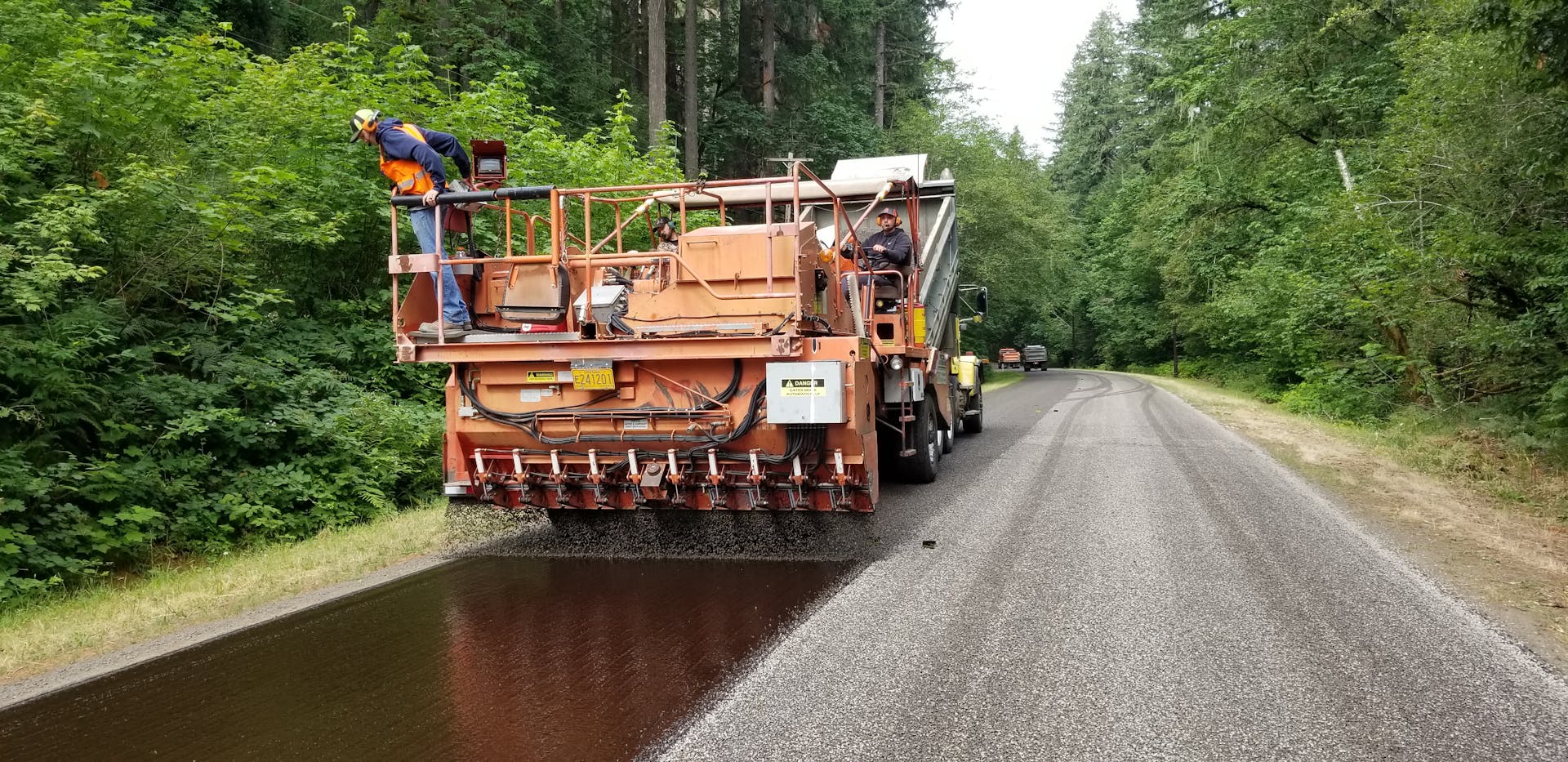
High/low pressure gauges are included to help you monitor the jaw closure and seal pressure, giving you more control over the sealing process.
Independent timers for vacuum, gas, and seal are also included, allowing you to set precise times for each stage of the process.
The pneumatic low-pressure jaw close safety system is a great feature, releasing the jaw if an obstruction is detected and preventing damage to the sealer.
You can also activate the sealer with a foot pedal, making it easy to use in a variety of settings.
The sealer requires a minimum of 100 psi of air to operate, and 115V electricity.
It's a large machine, measuring 30″ – 35″ W x 58″ H x 32″ D, but it's worth the space for the features it offers.
Recommended read: Security Seal
Sealing Options
The PVB Constant Heat Vacuum Sealer offers a range of sealing options to suit different packaging needs. The machine comes with a 3/4” wide constant heat flat seal in the top jaw, which can be heated to 550 °F.
A unique perspective: Heat Sealer
For added flexibility, the PVB also features bi-active seal options, including 3/4″ flat seals and 1/2″ serrated seals. The serrated seal options come in 1″ and 1/2″ widths.
Here are some of the key sealing options available:
- Bag Stretcher: Fingers fit inside edges of the bag to minimize wrinkles in the seal area
- Teflon Jaw Cover
- Bi-Acitve (both jaws heated) seal
- Serrated Seal
- Work Shelf & Bag Support: Supports the product during the packaging cycle
- Seal Only Switch: Retracts nozzles for use as a bag sealer (no vacuum)
- Bag Stop: Allows bag to always be sealed in the same location
Vacuum Options
When working with vacuum sealing machines, it's essential to consider the various options available to ensure you get the best results.
The TOB-BFZ-200-G vacuum sealing machine, for instance, allows for a sealing temperature range of RT to 250℃, adjustable with ±1.5℃ accuracy, which is crucial for delicate materials.
Some vacuum options you might want to consider include multi-stage vacuum and gas cycles, which can achieve lower residual oxygen levels. This is particularly useful when working with lithium polymer batteries, which require precise sealing conditions.
A vacuum level sensor ensures consistent vacuum levels are achieved every cycle, guaranteeing a reliable seal. This feature is especially important when working with soft packaging materials.
Venturi vacuum pumps offer quiet operation and low maintenance, making them a great option for busy workshops. In contrast, nozzle extend control allows for manual extension of vacuum nozzles, ideal for bulky bags that require extra care.
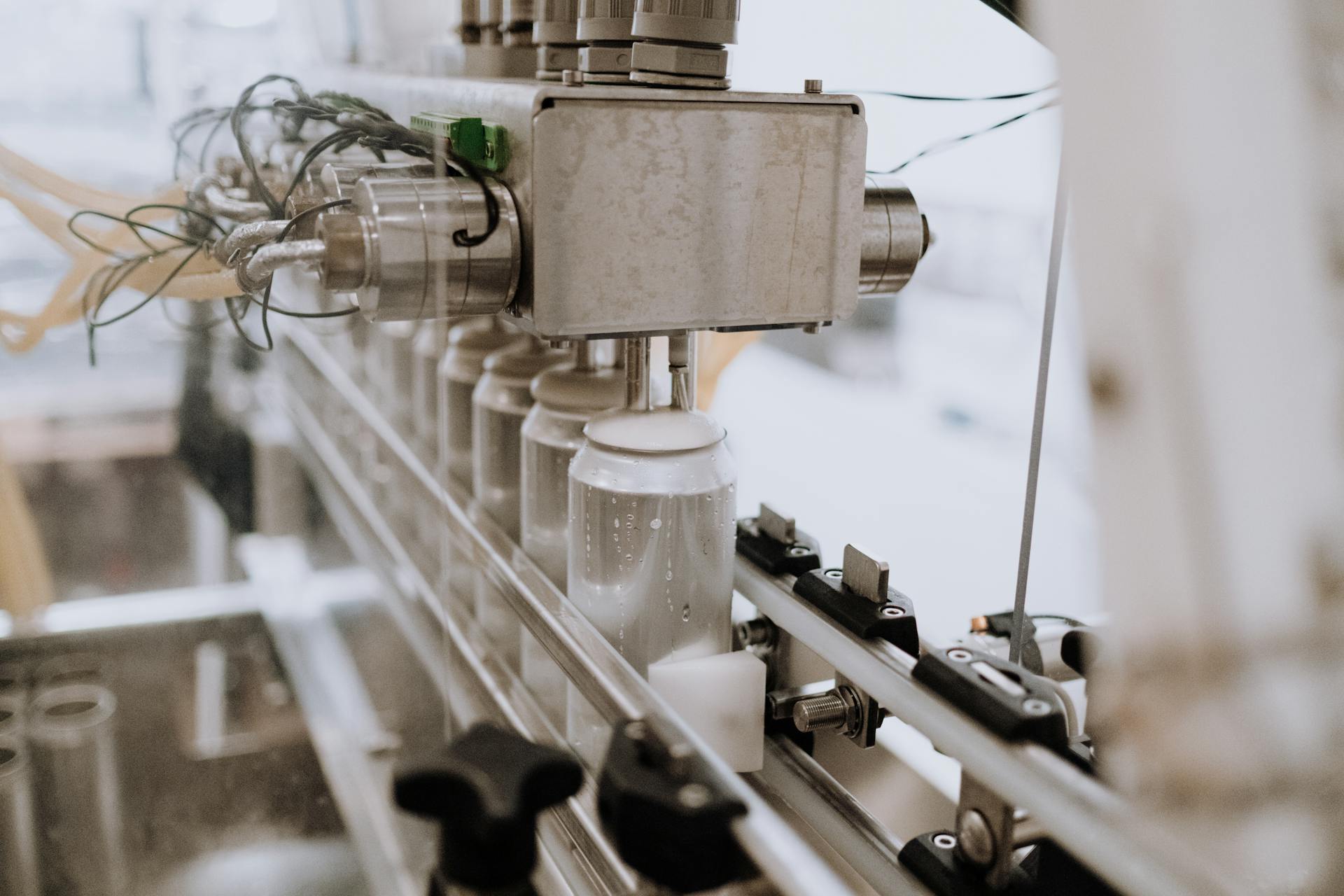
Larger nozzles can speed up the vacuuming process, while profiled nozzles provide more vacuum on thick materials, making them perfect for applications like pouch cell final sealing.
Here are some key features of the TOB-BFZ-200-G vacuum sealing machine:
Overall, understanding the various vacuum options available can make a huge difference in the quality of your seals.
Constant Heat Sealer
The Constant Heat Sealer is a versatile option for various packaging needs. It's designed to seal MIL spec barrier bags, coated paper, film, and foil laminates.
Constant heat sealers like the PVB model use a single heat source, eliminating the need for a heat and cool cycle during sealing. This makes them ideal for applications requiring modified atmosphere packaging (MAP).
The PVB Constant Heat Vacuum Sealer can heat its seal jaws to 550 °F, making it suitable for a wide range of materials.
Take a look at this: Heat Shrink Film
Seal Options
When choosing a sealing option, it's essential to consider how you'll be sealing your bags. A Bag Stretcher is a great option as it allows your fingers to fit inside the edges of the bag, minimizing wrinkles in the seal area.
For more insights, see: Semi-automatic Bag in Box Filling Machines
Having the right seal type is also crucial. You can choose from a 3/4″ flat seal or a 1/2″ serrated seal, both of which are available with a Bi-Acitve (both jaws heated) seal.
For those who prefer a serrated seal, you can opt for either a 1″ or 1/2″ seal. This is a great option for bags that need a bit more grip.
A Work Shelf & Bag Support is also a useful feature, as it supports the product during the packaging cycle. This can be especially helpful when working with fragile or delicate items.
If you only need to seal your bags without vacuum, a Seal Only Switch is a great option. This retracts the nozzles for use as a bag sealer.
To ensure consistency in your sealing process, a Bag Stop can be useful. This allows the bag to always be sealed in the same location.
Here are some of the available seal options:
- Bi-Acitve (both jaws heated) seal – 3/4″ flat seal or 1/2″ serrated seal
- Serrated Seal – 1″ or 1/2″
- Teflon Jaw Cover
Safety Considerations
Safety is a top concern for manufacturers of industrial equipment, and it's essential to consider the risks involved in using a vacuum heat sealing machine.
IMPAK, a leading company in the industry, emphasizes the importance of safety features to minimize risk to operators.
A variety of standard and optional safety features are available to ensure safer operation, but it's crucial to choose a machine that meets your specific needs.
Need an Explosion-Proof Sealer for hazardous locations? IMPAK can provide one, and it's a great option for industries that require a high level of safety.
Frequently Asked Questions
What is the difference between vacuum sealer and heat sealer?
A vacuum sealer removes air and then seals, while a heat sealer only seals the package, leaving air inside. This key difference affects the shelf life and freshness of stored items.
What are the disadvantages of vacuum sealing?
Vacuum sealing can pose health risks if not handled or stored properly, as anaerobic bacteria can thrive in oxygen-free environments
Which heat sealer is best?
There is no single "best" heat sealer, as the choice depends on your specific needs and preferences. Consider your application, budget, and convenience requirements to select from our range of hand, foot, and automatic impulse sealers.
Sources
- https://www.tobmachine.com/vacuum-sealing-machine-for-pouch-cell-final-sealing_p123.html
- https://www.impakcorporation.com/sealers
- https://www.pacmachinery.com/products/pvb-constant-heat-vacuum-sealer/
- https://www.packsealer.co.uk/vacuum-sealers/
- https://www.attrezzatureprofessionali.com/en/chamber-vacuum-sealing-machine-bar-50.html
Featured Images: pexels.com
